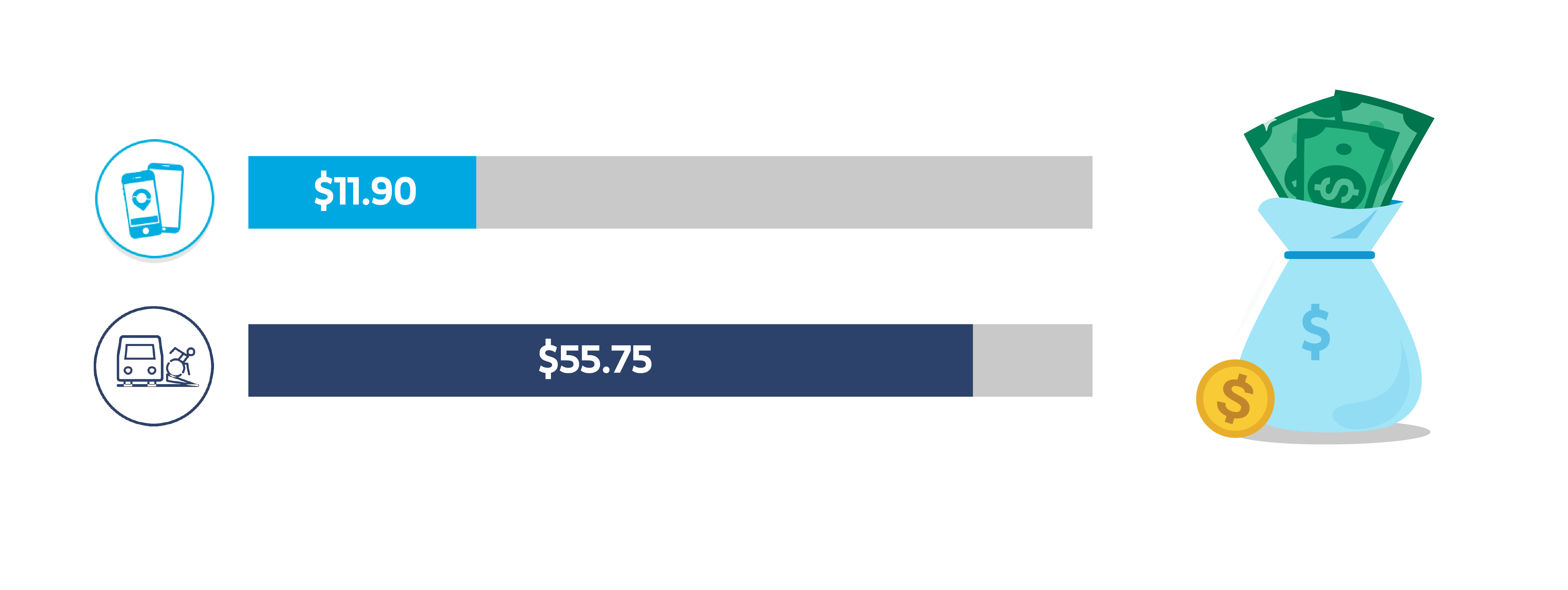At Via, we believe that mobility is a basic human right, and transit networks should be designed with the needs of entire communities in mind. However, the transportation needs within a particular community are never a one-size-fits-all monolith. There is variance in terms of people’s level of physical, financial, and technological access. This is the case both between the needs of the general population and the disabilities community, and also amongst members of the disabilities community.
The Americans with Disabilities Act (and other similar legislation around the globe) revolutionized accessible transportation. It was a monumental step towards creating greater equity for the nearly 25 million people in the United States with a travel-limiting disability. However, adoption has at times been slow for the transportation sector, and with mixed results. “I hope it’s the future of paratransit, honestly. I really hope that a lot of dial-a-ride services go this route. On-demand service just changes peoples’ lives. It’s hard to have an equal social opportunity when you don’t have on-demand transportation.” - SacRT Rider Now, even 30 years later, many transit systems are still not close to being fully accessible, and the rigidity of most transportation networks has made it challenging to build truly inclusive services. While advances in technology mean that we can now track the status of a pizza delivery from the moment it leaves the oven, for millions of people reliant on paratransit, waiting outside for a trip booked days ago with no way to track the status of where that vehicle is and when it will arrive is an all too common experience.
However, the last five years has seen a rapid development of new and innovative technology that rethinks the current approaches to transit design and ensures that people with disabilities have the tools they need to live independently, provide for their financial needs, and enjoy equal opportunity. TransitTech can be leveraged to build smart, unified transportation systems capable of providing truly equitable service across an entire population. Best of all, this can be done cost-effectively for cities, taxpayers, and riders alike.

An integrated & accessible experience.
The exciting news is that recent advances in TransitTech have generated new and innovative ways to design and operate systems that can deliver a high-quality experience for riders with accessibility needs at a cost-effective price to the agency. Cities with an existing on-demand microtransit network — or those considering investing in an on-demand network — can customize their microtransit service to more readily serve the needs of their entire community, an operational strategy known as 'commingling.'
Take Green Bay Metro (GBM), the transportation agency operating in Green Bay, Wisconsin. Serving a community of 200,000+ residents, GBM replaced their previous paratransit network with new technology. The results were immediate. Within the first two months, the service reached 98% on-time performance, and the new technology made it easier for both operators and passengers to see real-time vehicle locations and trip statuses. And, as of August 2020, both GBM’s general population microtransit and paratransit services utilize the same 12-vehicle fleet: An example of commingling ADA and non-ADA services for efficiency gains, without sacrificing service quality.
In Seattle, Washington, King County Metro introduced an “Access” program, served through their Via To Transit microtransit project , which offers point-to-point rides in an accessible vehicle for qualifying riders. This is another example of commingling fleets — where ADA paratransit trips are efficiently served with vehicles that are also used for the microtransit program. Riders contact KCM to receive eligibility for the program, and are given a unique promo code. Riders can then book on-demand trips, either through an app or over the phone, and a vehicle from the Via To Transit fleet will pick them up at their door and take them to their destination. Rides are the same price as regular Via to Transit service, and integration with the city’s ORCA card allows for a payment option for riders without a credit/debit card.

Comparing King County Metro’s cost of providing a wheelchair-accessible vehicle using on-demand microtransit (i.e. commingling of fleets) vs. the city’s traditional paratransit service.
A robust set of access features allows the rider to self-select if they would like to specify their disability type and pass this information onto the driver. Drivers receive additional training in how best to accommodate the needs of these riders — for example, by phoning a visually impaired rider when arriving at a pick up location to assist in getting them on board.
The best part? Commingling has generated huge savings for the city, with an average cost to serve a wheelchair-accessible Access on-demand trip of $11.90 versus $55.75 for the city’s existing paratransit operations.

A solution starts with a few key features.
Ensuring riders with accessibility needs have the right level of support requires robust solutions for an audience with diverse needs. Whether you’re exploring serving riders in the disabilities community through pre-scheduled or on-demand microtransit, you’ll need to ensure that your tools include features such as:
- Automated scheduling, dispatching, and ride assignment optimization.
- A diverse assortment of convenient and accessible booking options. This should include apps, call centers, and web booking.
- Real-time vehicle tracking in anticipation of ride pickup windows.
- Voucher programs or cash payment for unbanked or cash-preferred riders.
- Door-to-door provision for riders with the need for physical mobility accommodation.
- Routing powered by advanced algorithms, not by guesswork or pen-and-paper directions.
- Pass through information (and training) for drivers that empowers drivers to support the unique needs of their passengers.
Leveraging these technologies enables cities and transit agencies to reduce operating costs, while at the same time deliver a vastly improved rider experience.
Additionally, the city is able to take advantage of the multitude of benefits that come from a transit agency maintaining control of their own dedicated service such as:
- Offering a fully integrated transit solution in a white-labeled and customized app designed to meet the needs of the local community.
- Maintaining full control over its own data and ability to leverage this data for full network optimization.
- The ability to control messaging to its riders.
- The enhanced quality of service that comes from a dedicated pool of drivers who are trained to service the unique needs of this community.

What can we do to accelerate the path to equitable access?
In addition to leveraging accessible TransitTech, cities and transit agencies have a unique opportunity to dramatically improve paratransit and public transportation for people with disabilities by encouraging federal and state policymakers to incentivize the use of such technology across the nation. Via is working with national and local advocacy organizations to increase support for grant opportunities that prioritize technological solutions. Developing integrated, tech-forward transit systems improves operational efficiency and fleet management— delivering flexible and innovative transportation for the disabilities community. While the march towards autonomous vehicles will surely improve access in the future, we don’t have to wait that long: We can begin to better serve paratransit riders, right now.




%206.png?width=71&height=47&name=The%20Buzz%20Blog%20Hero%20(1750%20x%201200%20px)%206.png)